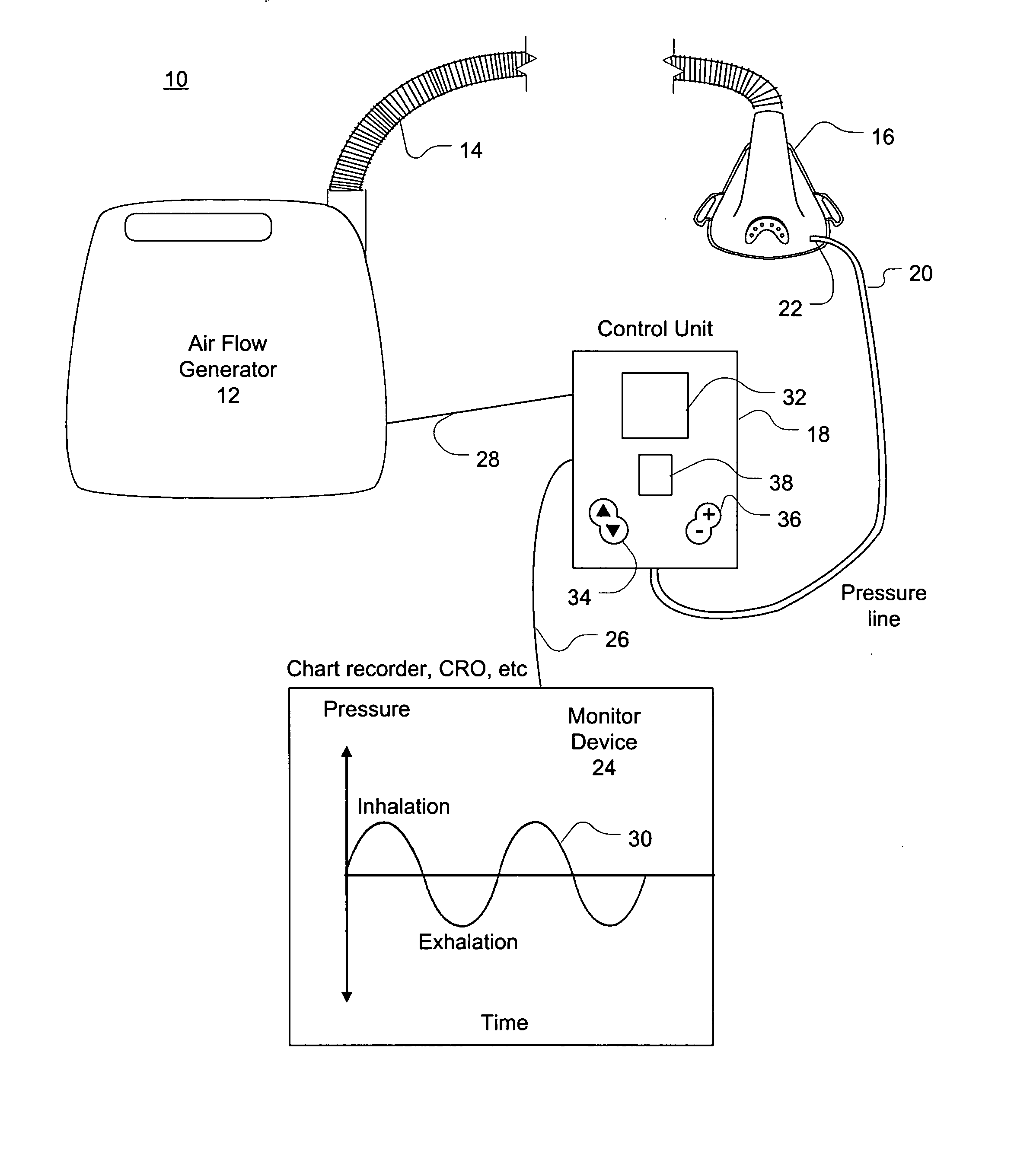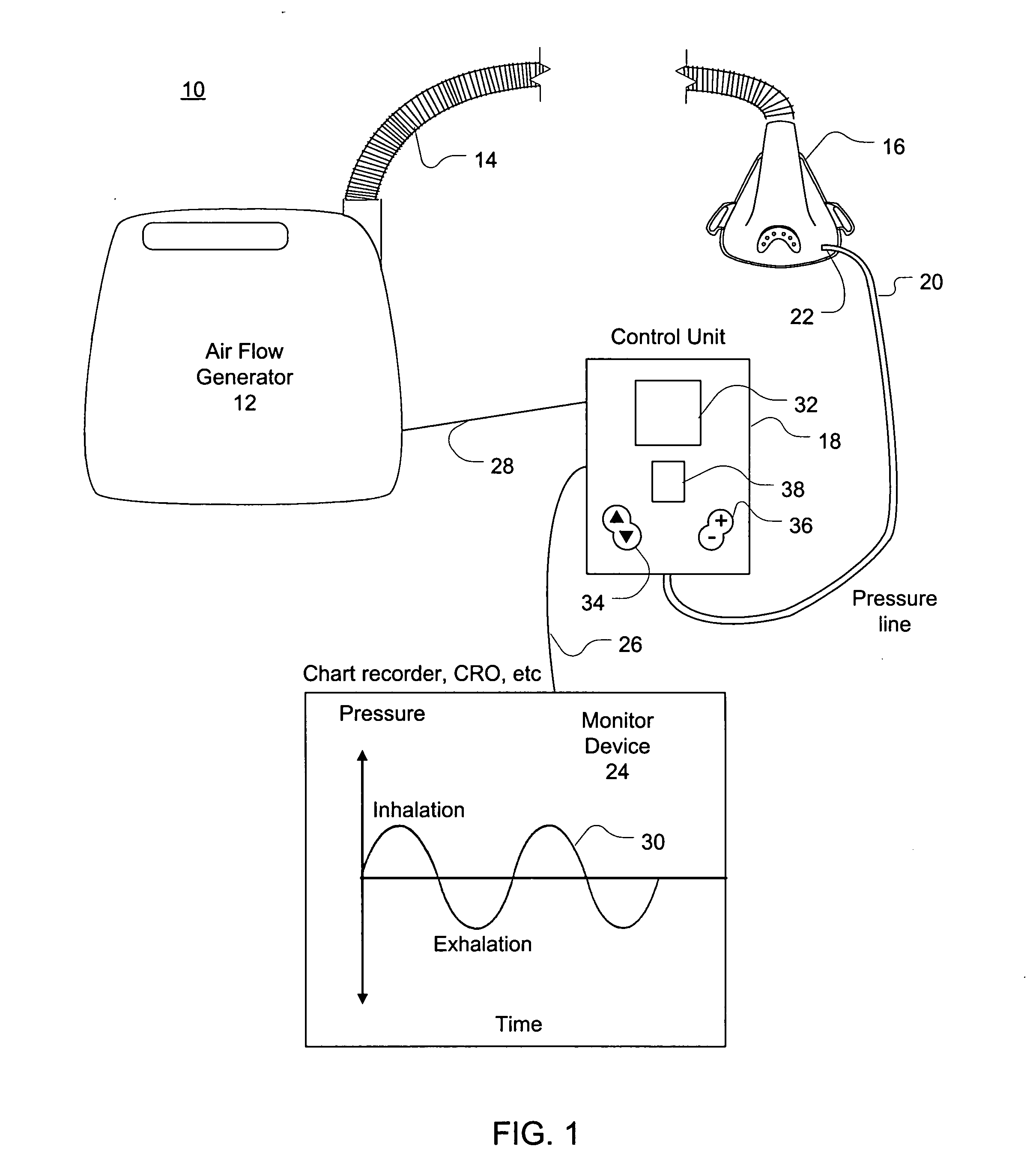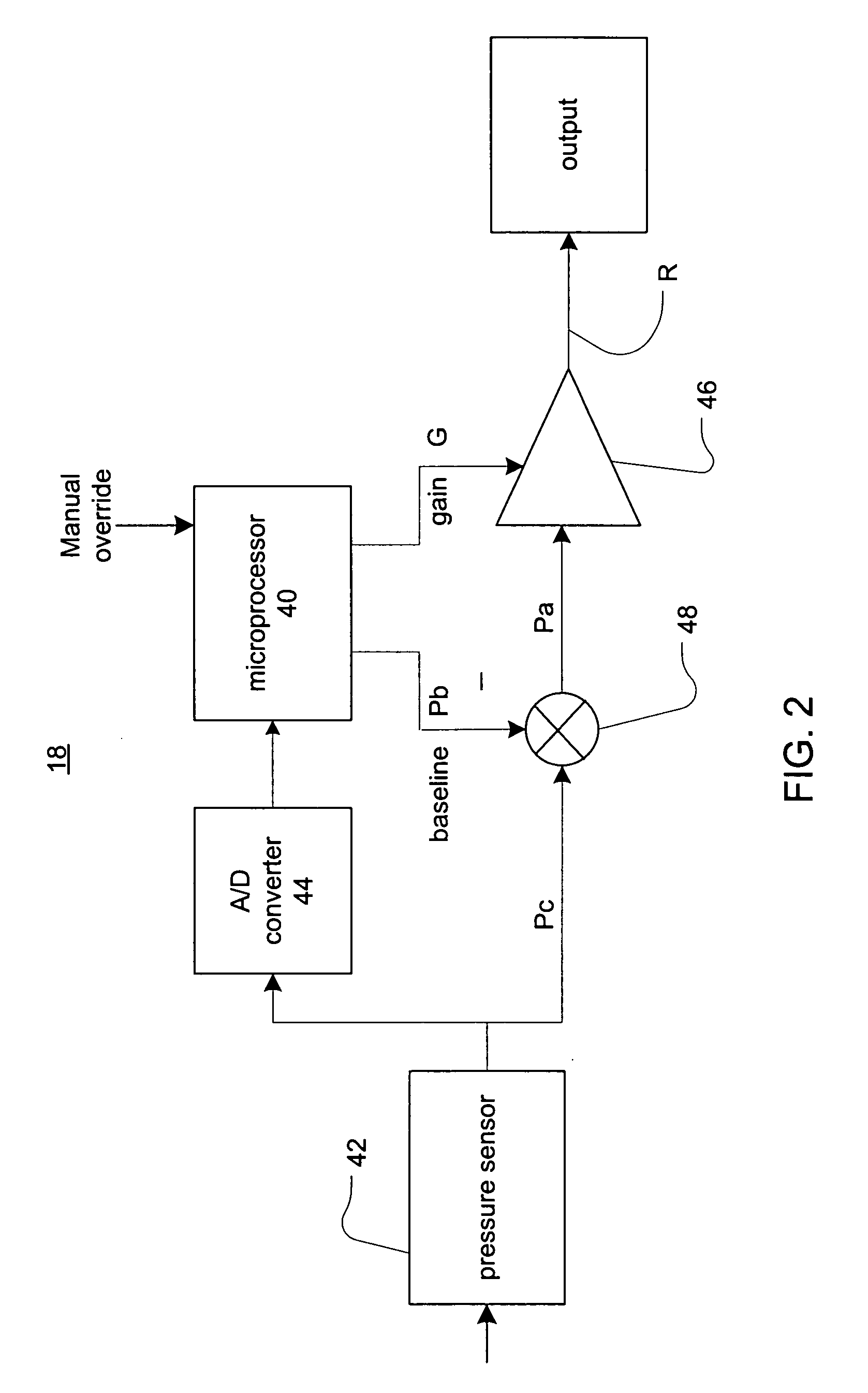Apparatus with automatic respiration monitoring and display
a technology of automatic respiration and display, applied in the field of respiratory systems, can solve the problems of compromising the integrity of monitored signals, requiring high resolution and extensive signal processing, and reducing the need for intervention during the operation of the subject respiratory apparatus, and sacrificing signal integrity. , the effect of reducing or eliminating the need for intervention
- Summary
- Abstract
- Description
- Claims
- Application Information
AI Technical Summary
Benefits of technology
Problems solved by technology
Method used
Image
Examples
Embodiment Construction
[0022]Referring now to FIG. 1, a respiratory apparatus 10 constructed in accordance with this invention includes a blower 12 adapted to provide pressurized air, a flexible conduit 14, a mask 16 and a control unit 18. The control unit 18 is connected to the mask 16 by a flexible pressure line 20 via a pressure port 22. The control unit 18 is also connected to a display 24 and to the blower 12 by respective cables 26 and 28. The blower 12 may be a CPAP flow generator such as the one marketed under the name Sullivan®V generator made by ResMed Ltd. of North Ryde, NSW, Australia.
[0023]The mask 16 is used to represent generically any suitable patient interface such as a nasal mask or a full face mask, such as the Mirage® mask made by ResMed, or other similar devices designed to deliver air from the generator 12.
[0024]The display 24 is designed to indicate graphically the operation of the apparatus 10 and the respiration of the patient, as indicated, for example, on chart 30. The display 2...
PUM
 Login to View More
Login to View More Abstract
Description
Claims
Application Information
 Login to View More
Login to View More - R&D
- Intellectual Property
- Life Sciences
- Materials
- Tech Scout
- Unparalleled Data Quality
- Higher Quality Content
- 60% Fewer Hallucinations
Browse by: Latest US Patents, China's latest patents, Technical Efficacy Thesaurus, Application Domain, Technology Topic, Popular Technical Reports.
© 2025 PatSnap. All rights reserved.Legal|Privacy policy|Modern Slavery Act Transparency Statement|Sitemap|About US| Contact US: help@patsnap.com



